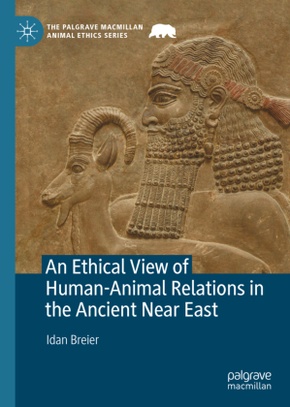
An Ethical View of Human-Animal Relations in the Ancient Near East
| Verlag | Springer |
| Auflage | 2022 |
| Seiten | 254 |
| Format | 14,8 x 1,8 x 21,0 cm |
| Gewicht | 463 g |
| Artikeltyp | Englisches Buch |
| Reihe | The Palgrave Macmillan Animal Ethics Series |
| ISBN-10 | 3031124049 |
| EAN | 9783031124044 |
| Bestell-Nr | 03112404A |
Exploring the earliest literary evidence for human-animal relations, this volume presents and analyzes biblical and Mesopotamian (Sumerian, Assyrian, and Babylonian) sources from the third millennium BCE through to the consolidation of the biblical literature in the first millennium BCE.
Key Features:
Provides the first comprehensive study of these texts from an ethical perspective.Examines proverbs, popular aphorisms, myths, epic literature, wisdom literature, historiography, prophecy, and law codes.Applies methodology from current contemporary biblical and ancient Near Eastern scholarship and human-animal ethics, thereby raising new questions that lead to fresh insights.
An Ethical View of Human Animal-Relations in the Ancient Near East is essential reading for scholars and graduate students of animal ethics, applied ethics and biblical studies.
Inhaltsverzeichnis:
Chapter 1. Fauna in Ancient Sumerian Proverbs: The Role Animals Played in
Shaping Southern Mesopotamian Social Norms and Conventions.- Chapter 2. Sumerian Faunal Fables: Talking Animals and Educational Lessons.- Chapter 3. Human Relations with the Animal Kingdom in Mesopotamian Literary Genres.- Chapter 4. Animals in Biblical and Ancient Near Eastern Law Codes.- Chapter 5. Human-Animal Relations in Biblical Narrative and Historiography.- Chapter 6. Human-Animal Relations in Classical Prophecy.- Chapter 7. The Place and Role of Animals in the Psalms and Biblical Wisdom Literature.- Chapter 8. Conclusion.
Rezension:
"Breier's interdisciplinary methods ... and the pictures he leaves us with are fittingly varied and complex ... . To take an image from the Book of Mark, having prepared so much good ground so carefully, Breier is to be commended for sowing these many mustard seeds. The concluding portions of each chapter serve to marshal broad and disparate textual evidence into a series of manageable overviews that may act as fertile starting points for further ethical analysis." (Alastair Harden, Journal of Animal Ethics, Vol. 13 (2), 2023)
